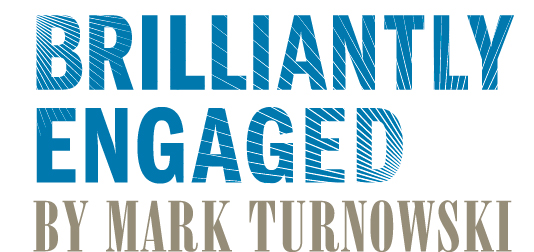What is a Cushion Cut Diamond?
With the revival of the Art Deco classics of the 1930’s, the cushion cut diamond has garnered a great amount of attention and popularity. This specific diamond cut was very popular in the 19th century and were cut primarily by hand. They were characterized by appearing as a cushion shaped pillow. Many were classified as “Old Mine Brilliants” that were identified by large facets, medium to large culets; crown angles over 40% and small tables. With the increased demand and higher price points obtained for the modern round brilliant diamond, many of these cushion diamonds were re-cut and gradually disappeared from the market place. What remained were primarily the lower colored diamonds that ranged from K thru O that had small hints of yellow within their body of color.
With present day technical advancements, a select number of specialized cutters have created a modern version of the cushion cut diamond.Unlike many other diamond shapes (Asscher, Radiant, Emerald, Ovals, Princess-Cut, Pear Shape, Marquise, and Heart Shape), Cushion Diamonds offer to the consumer various options that involve different patterns of facet alignment cuts and ratios. The aim of this post is to present to the reader the gemological knowledge necessary with which to make an intelligent decision on their diamond choice.
Cushion Cut Diamonds are presently identified in the market place by the various names and each has particular characteristics that are specific to their cut. The cutting industry has adopted this variation of the cushion cut as the most popular and approximately 98% of the cushion diamonds listed exhibit this cut. The primary reason for the predominance of this cushion cut variety is that in its final polished form it has the least amount of loss of weight. When the rough diamond material is presented to the cutter, their purpose, besides trying to maximize the brilliance of the diamond, is to finish with a diamond that has retained the most weight and thus the profit margin is higher. The term “crushed” or cushion modified brilliant derives from the appearance of the center of the diamond to sparkle or twinkle under specific (LED) lighting conditions. Moving the diamond from side to side or back and forth highlights this characteristic. Outside of these lighting conditions the brilliance and scintillation tends to disappear and become dull. What this achieves is that the brilliance in the diamond reaches the exterior area or crown facets of the diamond and creates an overall brilliant diamond. The immediate question that comes to mind is why all cushion diamonds wouldn’t be cut to obtain this brilliance. The answer lies with the minimizing of weight loss. By shortening the pavilion facets the cutter has retained more weight in the diamond. To compensate for the lack of decreased brilliance the cutters have added small facets that surround the central shortened pavilion facets. As facets create the brilliance in the diamond this has given the diamond an extra amount of brilliance. However in relation to the other cushion cuts these lack the overall brilliance as the light fails to reach the crown area of the cushion. Thus you will notice that this area of the diamond lacks any cut facets and appears empty in the diagram. Technically there has been no weight loss as opposed to the other cushion cuts.
Table Size and Depth
Another component to review is the table size and depth. You may notice that the diagrams of each cut have different table sizes and depths. This is driven again by the length of the pavilion facets and in turn the overall brilliance of the diamond. In the “crushed ice” cushion, most table sizes will range in the upper 50s to middle 60s range. As the focus of the brilliance is the center of the diamond as opposed to the entire diamond, the cutter can reduce the table size as the viewer is primarily directed to look at the intensity of the brilliance coming from the center of the diamond. The tradeoff is the lack of overall brilliance or broad white light throughout the entire diamond.
The term “antique style cushion” refers to the cushiony or pillow look of the diamond. The popularity of this cut has increased dramatically over the past few years. However, due to the rapid increase of the rough material, production has not been able to stay in line with demand. To define these added features it is important to understand the role of the term brilliant and why I have broken down the antique cut to two different terms of old mine brilliant and cushion brilliant.
The GIA (Gemological Institute of America), the world’s leading gemological laboratory, has defined the classic round brilliant diamond with the eight pavilion facets brilliant as the default for the cutting style and the shape as the variable based on the diamond cut. In essence this states that the classic eight pavilion faceted round diamond has been modified to 4 facets.
The choices in selecting a cushion have hopefully been explained more clearly. With the abundance of information available we have tried to narrow the scope of the options and specified the variables within each cut. With their present day popularity, many consumers are drawn to this shape. On many occasions, the majority of new engagement rings coming into the market are shown with this center diamond shape as the focus. We hope that with this tutorial your search will now contain a better perspective in your determination for the perfect cushion cut diamond that best fits your personality.
